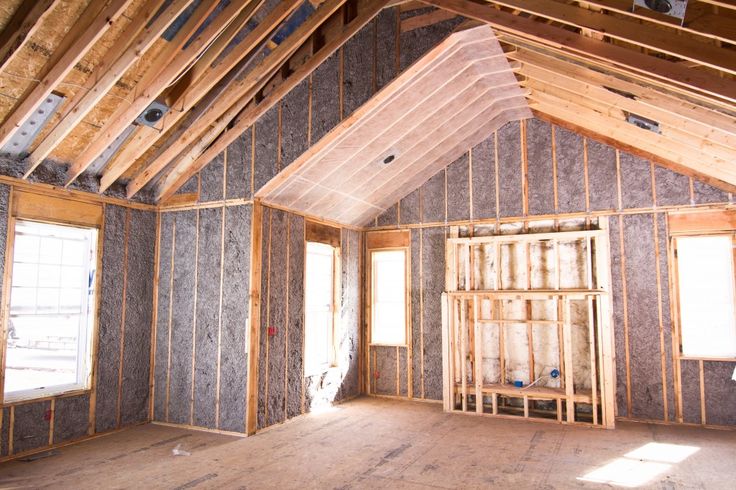As homeowners in Tallahassee, FL, seek ways to enhance energy efficiency and comfort, retrofit insulation emerges as a smart solution. With rising energy costs, finding effective ways to keep your home well-insulated can lead to significant savings on energy bills. This article explores the benefits of retrofit insulation, why it’s essential for homes in Tallahassee, and how you can make the most of it.
Understanding Retrofit Insulation
Retrofit insulation refers to the process of adding insulation to an existing structure without the need for extensive renovations. It can be applied in various areas of a home, including walls, attics, and basements. Unlike new construction, where insulation is installed during the building process, retrofit insulation targets areas that may not have adequate insulation or where existing insulation has deteriorated.
Benefits of Retrofit Insulation
- Energy Efficiency
One of the most compelling reasons to invest in retrofit insulation is its impact on energy efficiency. By reducing heat transfer, insulation helps maintain a consistent indoor temperature. This leads to less reliance on heating and cooling systems, ultimately lowering energy bills. - Increased Comfort
Proper insulation ensures that your home remains comfortable throughout the year. In Tallahassee, where summers can be hot and humid, effective insulation keeps indoor temperatures cooler, providing a refuge from the heat. - Moisture Control
Insulation plays a crucial role in managing moisture levels within your home. Without adequate insulation, condensation can occur, leading to mold growth and structural issues. Retrofit insulation helps prevent these problems by providing a barrier against moisture. - Reduced Noise
In addition to temperature control, retrofit insulation can also reduce noise transmission between rooms and from outside. This creates a more peaceful living environment, which is especially beneficial in busy neighborhoods.
When to Consider Retrofit Insulation
Several signs indicate that your home may benefit from retrofit insulation:
1. High Energy Bills
If you notice a significant spike in your energy bills, it may be time to assess your insulation. Poorly insulated homes can lose heat in winter and cool air in summer, leading to higher energy costs.
2. Uncomfortable Indoor Temperatures
If certain areas of your home feel too hot or too cold compared to others, it’s a clear sign that your insulation may not be performing effectively. Retrofit insulation can help balance these temperature disparities.
3. Moisture Issues
If you see signs of condensation, mold, or mildew, these are indications of inadequate insulation. Addressing insulation can help resolve these moisture-related problems.
Types of Retrofit Insulation
There are several types of insulation suitable for retrofitting. Choosing the right one for your home depends on factors such as your budget, the area being insulated, and your specific insulation needs.
1. Fiberglass Batt Insulation
Fiberglass batt insulation is one of the most common types used in retrofitting. It comes in pre-cut panels and can be easily installed between wall studs or ceiling joists. It offers good thermal resistance and is relatively affordable.
2. Spray Foam Insulation
Spray foam insulation is a versatile option that expands to fill gaps and cracks. It provides excellent air sealing and moisture control, making it ideal for hard-to-reach areas. While it may have a higher upfront cost, its long-term energy savings often make it worth the investment.
3. Blown-In Insulation
Blown-in insulation consists of loose-fill materials that can be blown into walls, attics, and other spaces. This type is particularly useful for retrofitting existing homes since it can fill voids and irregular spaces effectively.
4. Rigid Foam Board Insulation
Rigid foam boards can be used in walls and foundations. They provide high insulation values and can be installed on the exterior or interior of walls, depending on the building design.
Installation Process
When considering retrofit insulation, it’s crucial to follow a proper installation process to ensure maximum efficiency and effectiveness.
1. Assessment
Start with a comprehensive assessment of your home’s current insulation. A professional can evaluate areas that need improvement and suggest the best insulation options for your needs.
2. Preparation
Before installation, prepare the space by cleaning and repairing any damaged areas. This may include sealing gaps or fixing moisture issues to ensure the insulation performs optimally.
3. Installation
Depending on the insulation type chosen, the installation process will vary. For example, spray foam requires specialized equipment, while fiberglass batts can often be installed by homeowners with some DIY experience.
4. Final Checks
After installation, conduct a thorough check to ensure everything is properly sealed and installed. This will help maximize the effectiveness of your new insulation.
FAQs About Retrofit Insulation
Q: How much can I save on energy bills with retrofit insulation?
A: The amount you save depends on several factors, including your home’s size, existing insulation, and energy costs. Many homeowners report savings of 20% or more after installing retrofit insulation.
Q: Is retrofit insulation a DIY project?
A: While some insulation types can be installed by DIYers, hiring professionals is recommended for spray foam insulation and complex installations to ensure proper application and safety.
Q: How long does insulation last?
A: Most insulation materials have a lifespan of 20 years or more, but this can vary based on factors like moisture exposure and settling. Regular inspections can help identify when insulation needs replacement.
Q: Can retrofit insulation improve my home’s value?
A: Yes! Improving your home’s energy efficiency can enhance its overall value and appeal to potential buyers.
Q: Do I need to insulate every part of my home?
A: While it’s not necessary to insulate every area, focusing on key spaces like attics, walls, and basements will yield the most significant benefits.
Conclusion
Retrofit insulation is an effective way to save on energy bills while enhancing comfort in your Tallahassee home. By improving energy efficiency and addressing moisture concerns, you can create a healthier living environment. For expert insulation services in Tallahassee and surrounding areas, contact Premier Insulation Plus at (850) 703-7381. Transform your home today and enjoy the benefits of retrofit insulation!
